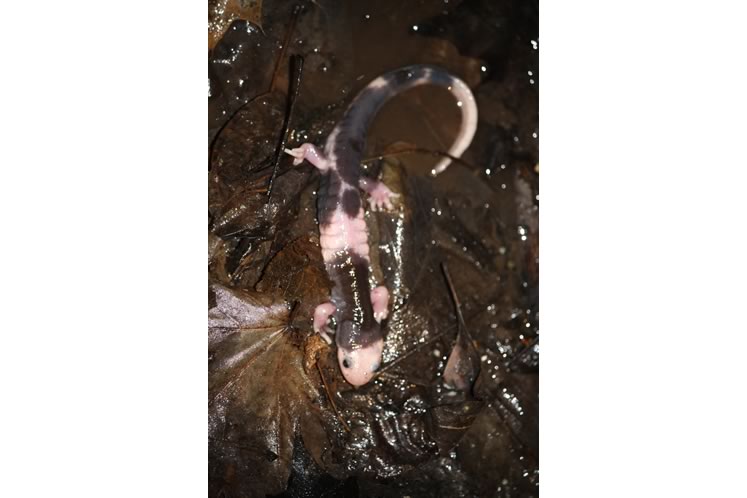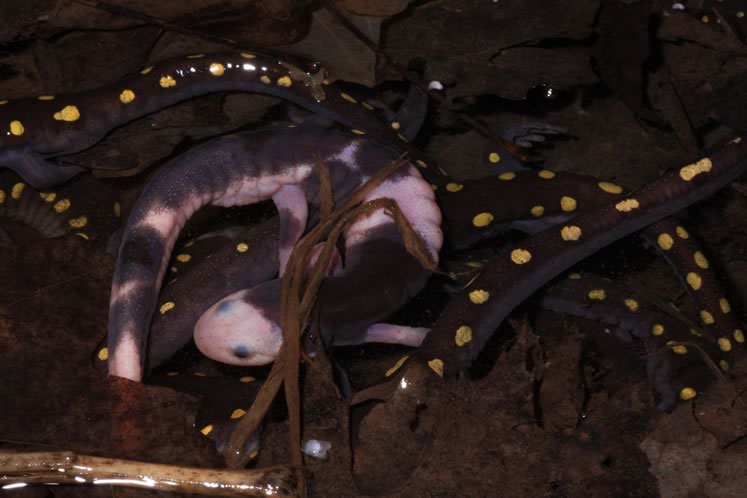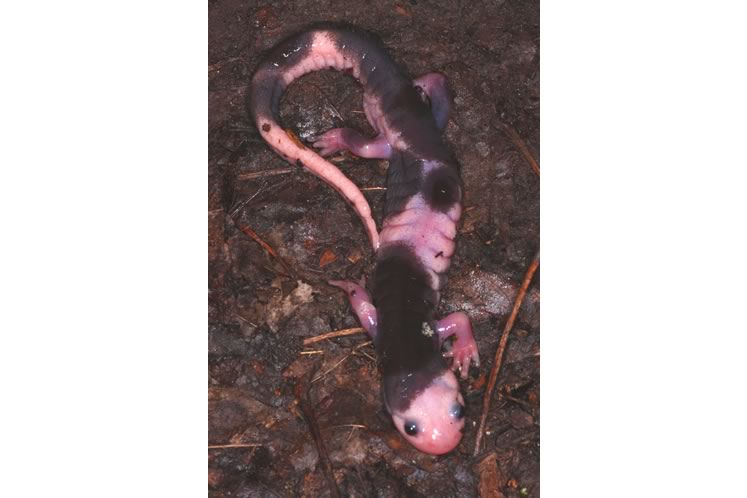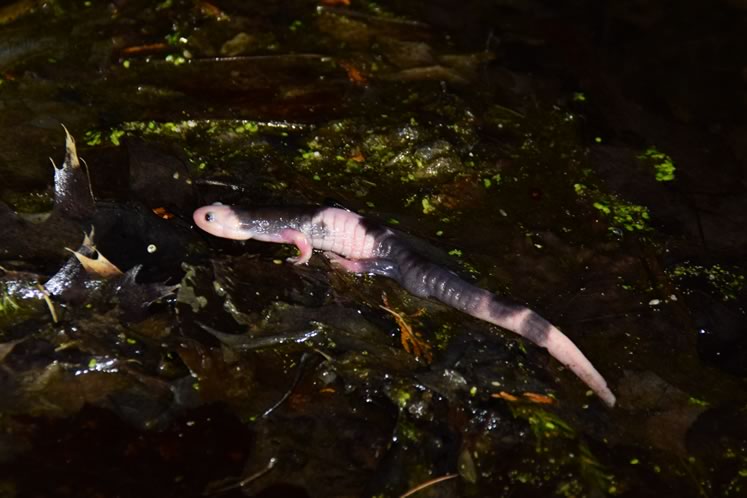The Return of the Salamanders
This year I managed to take video of the underwater breeding of spotted salamanders.
There are few more anticipated events in my naturalist year than the return of salamanders to their breeding ponds. Rain and warmth in the first half of April conspire to coax these exquisite creatures out of their woodland hiding places.
They walk purposely back to the ponds that cradled them in their larval stage, probably guided by odour, just as spawning salmon follow scent cues to return to their natal streams.
This year I managed to take video of the underwater breeding of spotted salamanders. Frenzied movement typifies these mating aggregations, which shouldn’t surprise. These salamanders have only a brief window of time to conduct the critical business of reproduction.
Most of the salamanders in the video are males, which can be distinguished from females by their enlarged cloacas, or vents, at the base of their tails. Males are also noticeably slimmer than females. The abdomens of gravid females are swollen with hundreds of eggs.
The small white mushroom-shaped blobs visible in the video are spermatophores deposited by the males. Females hover over these packets of sperm to fertilize their eggs.
The pond where the video was taken also hosts bizarre “piebald” spotted salamanders missing much of the usual pigmentation. Each piebald is uniquely patterned, allowing them to be easily recognized as individuals from year to year.
This led to a fascinating discovery this spring. I looked at the images of piebald salamanders taken by friends and myself in recent years and was astonished to find an individual that turned up in photos from 2010, 2011, 2017 and 2019. Assuming at least two years to attain adult size, this salamander is at least 11 years old!
I know that these piebald spotted salamanders, and their normally coloured brethren, will yield other surprises in the years to come. Spring of 2020 will once again find me pondside, with my flashlight – and my curiosity – burning brightly.
Related Stories
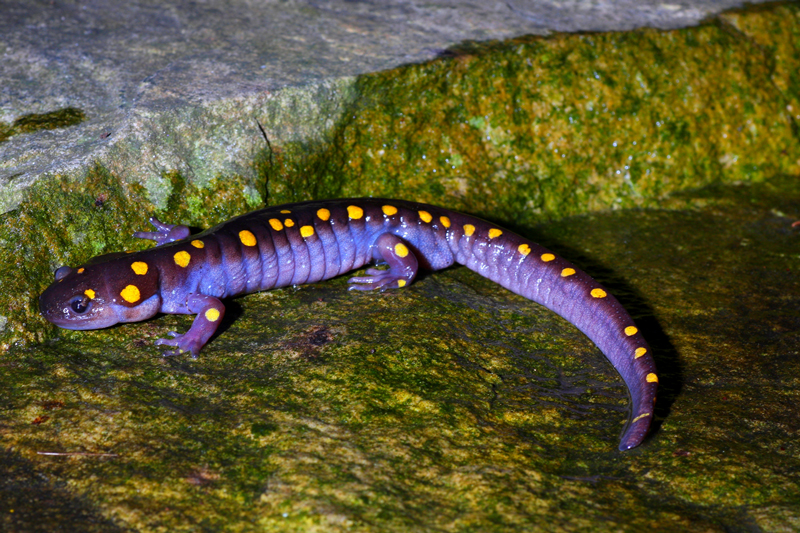
April is Salamander Time
Apr 9, 2010 | | Notes from the WildDon Scallen introduces us to three species of salamanders that are starting to appear in our hills. The first half of April is salamander time in our hills.
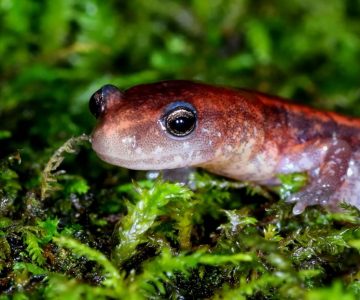
Autumn Salamanders
Oct 2, 2018 | | Notes from the WildSmall wonder so many salamanders are active at this time of year, seeking last suppers of grubs and spiders, crickets and millipedes.
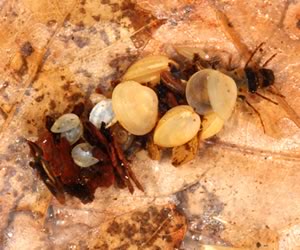
Caddisflies
May 30, 2016 | | Notes from the WildFrench artist Hubert Duprat capitalized on this in the 1980s by supplying caddisflies with flecks of gold and tiny precious stones.
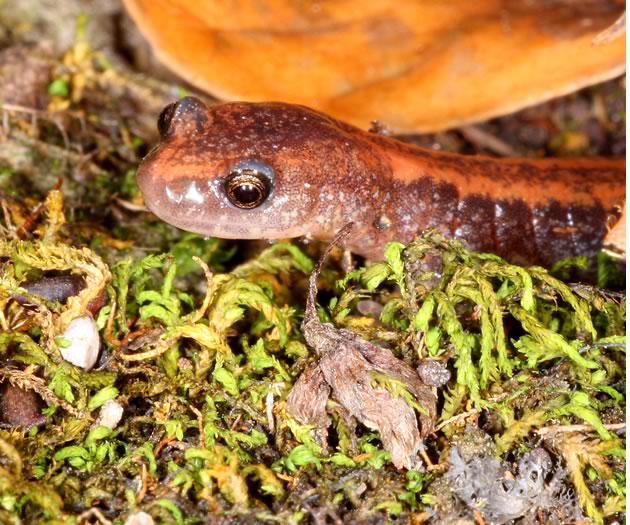
Red-backed salamander
Oct 17, 2013 | | Notes from the WildRed-backed salamanders are abundant, outnumbering all of the reptiles, rodents and birds that share their forest habitat.
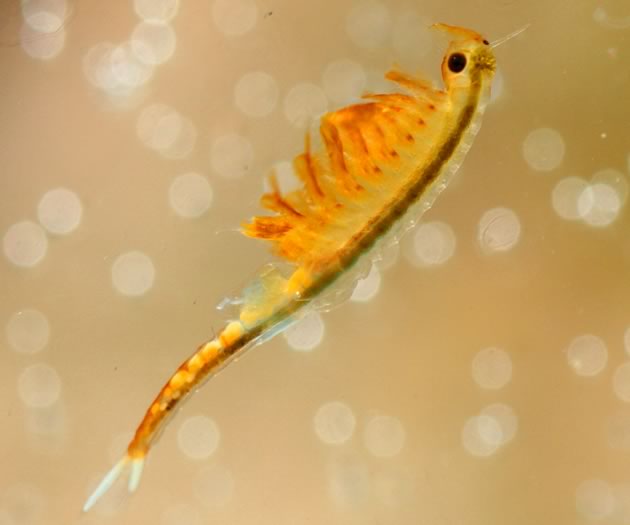
Vernal Pool Fairy Shrimp
May 5, 2015 | | Notes from the WildThese aquatic shrimp fairies are aptly named, for they are tiny, gossamer creatures.
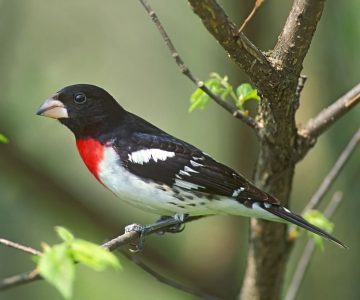
Spring Hikes on The Bruce Trail
Mar 26, 2018 | | EnvironmentAlong the Bruce Trail, spring is the time to slow to a saunter and see, hear and scent nature’s renewal.
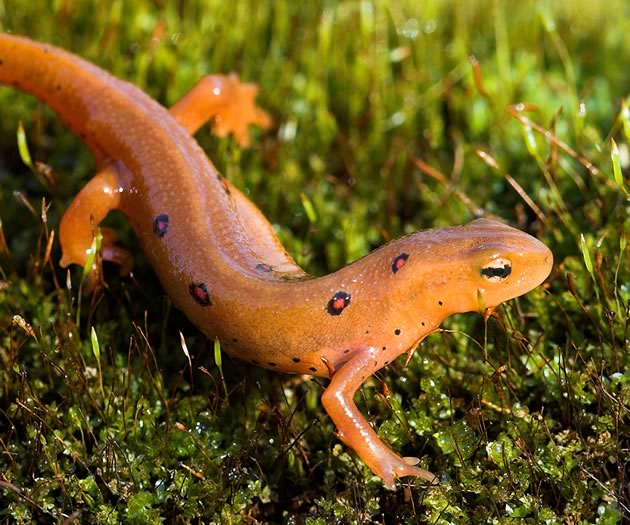
Vernal Pools
Mar 20, 2017 | | EnvironmentThese fleeting spring wetlands are factories of biodiversity. Unusual winters threaten vernal pools, as do hot, dry summers.
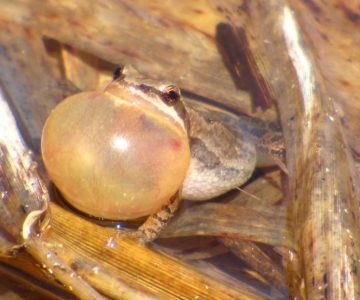
Chorus Frogs
May 14, 2018 | | BlogsChorus frogs are vulnerable to a who’s who of predators from ground-foraging birds, to shrews, to big spiders to small snakes.
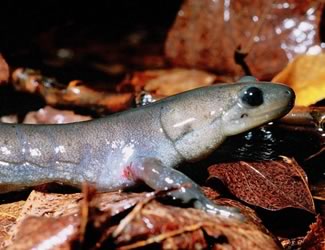
The Jefferson Salamander
Apr 5, 2011 | | Notes from the WildThe Jefferson salamander is a cause célèbre locally because of its very restricted range in Canada.
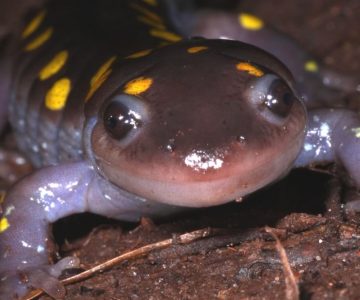
CSI: Natureworld The Case of Burying Beetle Bob
Nov 2, 2018 | | Notes from the WildA CSI probe into Bob’s disappearance has revealed damning evidence linking Sam to the incident!

